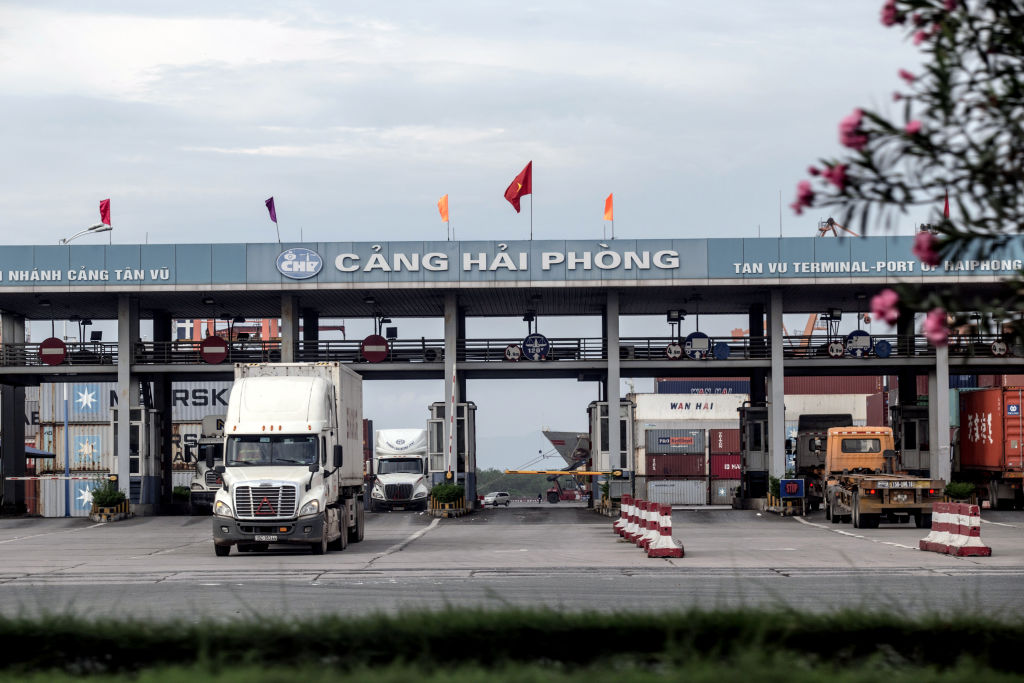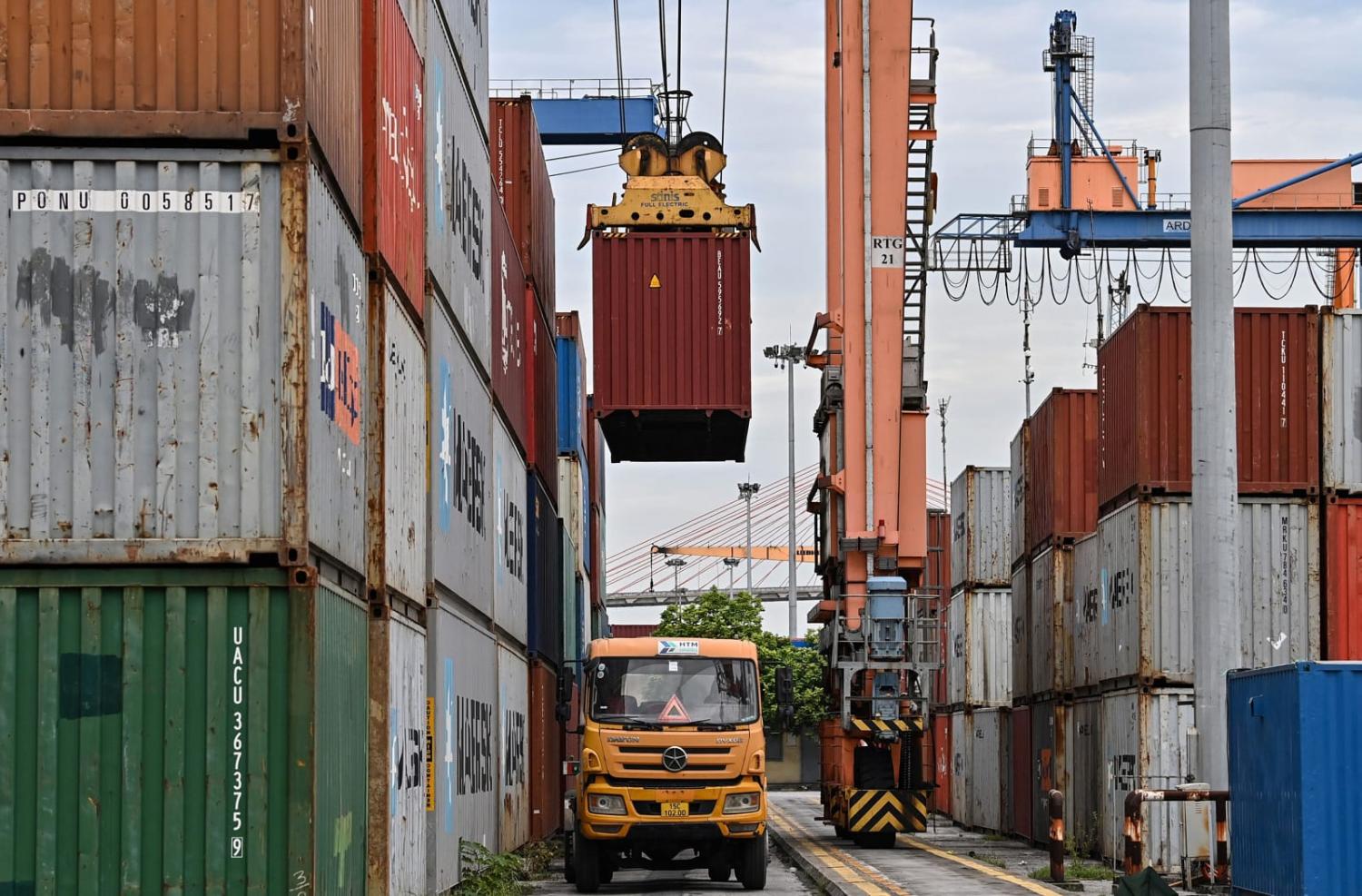Vietnam’s main ports have shot up the world rankings in terms of volumes of container-based traffic as manufacturers increasingly pull out of China in the wake of the tariff-based trade war with America.
As the latest data on Vietnam’s growing “connectivity” – essentially the smooth and cost-effective movement of cargo – with the shipping sector shows, it jumped five places to ninth on the basis of a nearly 14% increase in volumes in the fourth quarter of 2023.
An increase in volumes of this amount is pretty much off the scale. According to supply-chain analyst Sea-Intelligence, Vietnam’s ports grew connectivity by comfortably the highest percentage of all the top 20 nations in the global index, supporting predictions of a few years ago.
Within the Asia-Pacific region, Vietnam was out on its own. For instance, Japan’s connectivity slipped by 7% on the global index, Singapore gained 3%, Malaysia nearly 4%, South Korea a little more than 5% and Hong Kong 11%.
Vietnam’s popularity as a container destination has not come out of the blue. “Vietnam’s connectivity has been on a consistent upward trajectory,” notes Sea-Intelligence’s latest report, citing a substantial jump during the pandemic that has since been maintained.

There are also geopolitical causes for the sustained burst of activity in Vietnam’s main ports. For instance, the extraordinary surge in containerised trade into North America, up by no less than 44% between January and November 2023, is a reflection on the unforeseen consequences of the trade war launched between the United States and China under the Trump administration. Just one notable example is electronics as manufacturers hurriedly relocate production from China to Vietnam.
As the International Monetary Fund’s first deputy managing director, economist Gita Gopinath, told the International Economic Association in late 2023, Vietnam has become the beneficiary of US-imposed tariffs between 2018 and 2019 as Chinese manufacturers and exporters moved quickly to circumvent them. “US imports of Chinese goods subject to the tariffs have been primarily replaced by exports from Vietnam and Mexico of firms that are intricately linked to China’s supply chains,” Gopinath explained.
And, citing nearly new 3,000 trade restrictions imposed globally during 2022, up by nearly three times compared with 2019, Gopinath lamented how trade and foreign direct investment “is now increasingly driven by geopolitical preference rather than by business fundamentals” in a fracturing environment. This is very much the case in Vietnam which is turning into a “connector country”, in economists’ parlance. Not only is the nation of 97 million posting big gains in its share of exports from China, it is also achieving even bigger gains in exports to America.
With ports leading the way, the country’s one-party government plans to carry on where it left off in 2023. Currently, Vietnam ranks only 80th in the world in terms of quality of port infrastructure but, with much of its 3,444-kilometre coastline lying on the South China Sea, it occupies an advantageous natural position from a shipping perspective.
The trade ministry has set a target of boosting exports by 6% through 2024, which most economists consider achievable. After all, Vietnam’s trade deal with the European Union agreed in mid-2019, jumped to a value of more than $50 billion in 2021, its first full year of operation.
The government also aims to double its ports’ capacity to 400 million tonnes by 2030 in a much-needed investment in modernisation and expansion. Although most of Vietnam’s 320 ports handle only coastal vessels, some “serve as nodes for the trans-shipment of goods while the larger ports are being upgraded continuously for foreign trade,” explains analyst and publisher Marine Insight.
While 400 million tonnes is seen as ambitious, the government has made a start. For instance, current works at the port of Hai Phong, built by the French 150 years ago in the north of the country, are designed to accommodate bigger vessels up to 100,000 dead weight tonnes.
In contrast with its ports, the government’s ship-building aspirations have stumbled. The industry was forecast to post a compound annual growth rate of 6% between now and 2032, but the state-run Shipbuilding Industry Corporation, supposedly the flagship operation, has just collapsed into bankruptcy with enormous debts and the government is trying to rescue it.
More broadly, Vietnam’s current trade boom puts it in the frame as the next Asian tiger. Nearly 20 years ago Goldman Sachs predicted Vietnam would be ranked 21st among global economies by 2025. Today the IMF puts it at 37th with a gross domestic product of $433 billion, nearly the same as Malaysia but lagging a long way behind Poland, the current occupant of 21st position, with a GDP of $842b billion.
However, Vietnam’s prospects appear set to improve in a world of fracturing supply chains.

